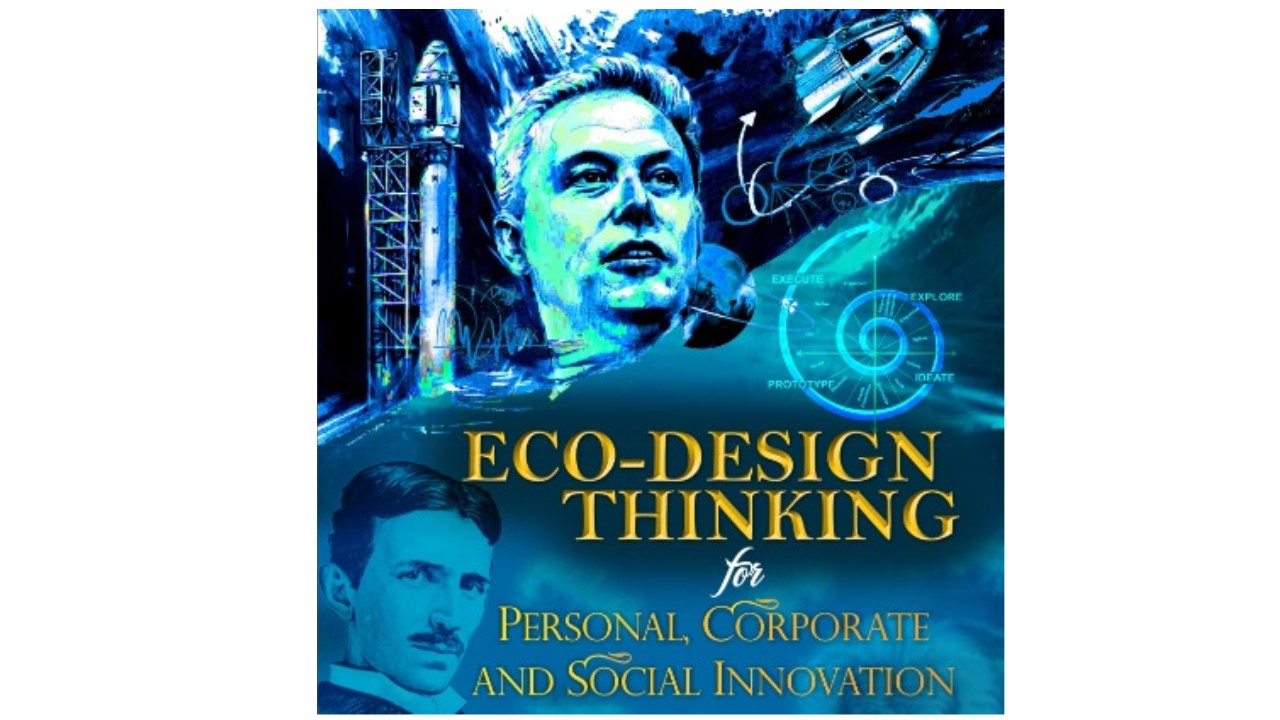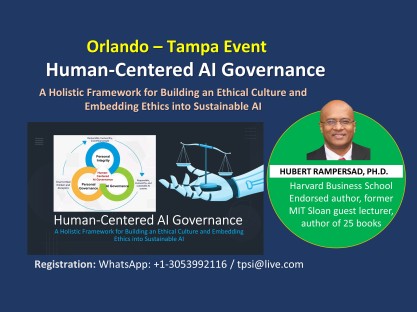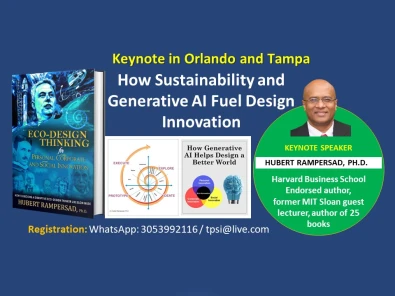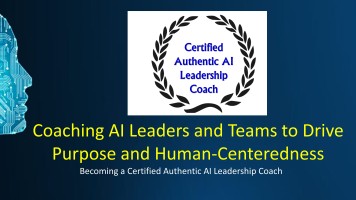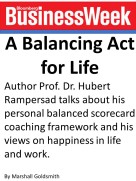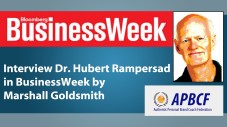Sustainable creativity fosters wise innovation in today’s intricate world and the AI age. Conventional creative processes often fail to ignite the necessary spark of imagination and critical thinking. Interestingly, the best ideas come when you are alone. Regrettably, many organizations prioritize theatrical group brainstorming sessions over genuine sustainable creativity development. It’s important to note that cozy meetings are not essential for generating innovative ideas. In fact, you tend to be more creative when working alone rather than in groups.
Creativity and critical thinking are crucial when dealing with AI. Creativity and critical thinking are two types of thinking that involve different skills and behaviors. Creativity is the ability to generate new ideas and solutions, while critical thinking is the ability to evaluate the validity and worth of existing ideas and solutions. Creativity is needed to develop intelligent AI algorithms that will help you distinguish between important and unimportant in a conversation with generative AI. By using critical thinking, we can improve our ability to effectively communicate, solve problems, build arguments, and draw conclusions when working with AI. Employees must be able to question AI-generated results, recognize possible limitations in the underlying data, and be aware of potential biases in AI algorithms.
In this article, I provide the holistic Personal Disruptive Innovation roadmap for cultivating creativity and critical thinking effectively.
Creativity and Critical Thinking Roadmap
Personal Disruptive Innovation is the creativity, authenticity, integrity, empathy, and critical thinking roadmap that will help you unlock your creative potential by cultivating a solid growth, ethical and critical thinking mindset, creating new and unique opportunities, and disrupting your current target market. Personal disruptive innovation is a term that describes a holistic system for developing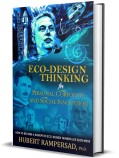 human intelligence, authenticity, empathy, integrity, and critical thinking. This concept is based on my latest book, “Eco-Design Thinking for Personal, Corporate, and Social Innovation.” This model involves five steps: 1. Personal Ambition, 2. Personal Brand, 3. Personal Innovation Strategy, 4. Implementation, and 5. Personal Integrity & Empathy. This model is illustrated below:
human intelligence, authenticity, empathy, integrity, and critical thinking. This concept is based on my latest book, “Eco-Design Thinking for Personal, Corporate, and Social Innovation.” This model involves five steps: 1. Personal Ambition, 2. Personal Brand, 3. Personal Innovation Strategy, 4. Implementation, and 5. Personal Integrity & Empathy. This model is illustrated below:
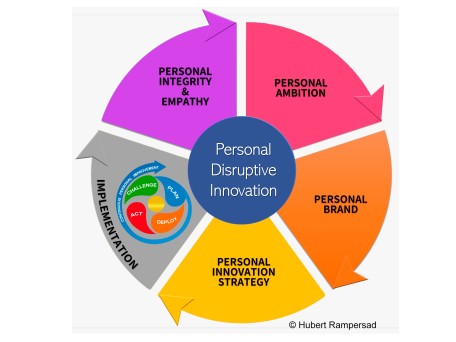
This model will help you develop visionary, imaginative, and empathetic thinking. Instead of thinking outside the box, you’ll think like there is no box. The key is to cultivate self-knowledge, self-awareness, self-management, and self-learning to drive personal innovation, which can help you become more creative and resilient and sharpen your authenticity, integrity, empathy, and critical thinking skills. Remember that without self-knowledge, personal innovation, a strong mindset, and personal integrity, you won’t be able to succeed as an empathetic and disruptive innovator. This system will unlock your creative potential and imagination while honing your authenticity, integrity, empathy, and critical thinking skills. It will guide your beliefs and actions, helping you discover your purpose in life and leading to a more fulfilling, content, and healthier life, personally and professionally.
Personal disruptive innovation is a system that helps you explore and redesign your life, build resilience, and develop your personal brand. It enables you to define your higher calling and discover your life’s purpose. Elon Musk once said: “Attach yourself to a mission, a calling, a purpose only. That’s how you keep power and your peace. It worked pretty well for me this far”. Using the personal disruptive innovation model, you can become a visionary, imaginative, and empathetic individual. This involves using self-learning to translate your self-knowledge into personal innovation and to develop skills such as resilience, authenticity, integrity, strategic thinking, and critical thinking, which are crucial in the AI era. This system will also help unleash your creative potential and imagination and will help you skillfully analyze information from observation, experience, reflection, and reasoning.
Personal Ambition – Personal Purpose
Although the personal disruptive innovation model consists of 5 phases, I will only focus on phase 1 (Personal Ambition – Personal Purpose) in this article because the foundation of creativity and critical thinking lies in this phase. This initial step involves engaging in a reflective process that includes deep thinking, introspection, and self-reflection. The outcome of this phase will be the creation of your personal ambition or purpose statement. This statement comprises your mission, vision, and key roles. You can click this link to view my personal ambition/purpose statement.
Having a higher purpose in life means you’re living your values and beliefs. Finding your higher purpose is discovering who you are, what you stand for, what matters to you, and what you can contribute to the world. When someone feels that his life lacks purpose, he may struggle to find motivation and direction. This can lead to a sense of detachment from his values and a lack of inspiration to enrich his life and those around him. Finding motivation and direction can be easier when you have a purpose in life. This will inspire you to become more effective, ethical, and fulfilled. Having a purpose in life will inspire you to discover ways to become more creative, imaginative, and innovative. Life is never richer, fuller, or more rewarding than moving faithfully and persistently toward a compelling purpose. Remember what Elon Musk said: “Don’t even attach yourself to a person, a place, a company, an organization, or a project. Attach yourself to a mission, a calling, a purpose only. That’s how you keep power and your peace. It worked pretty well for me this far”.
Having a clear purpose is crucial to becoming a visionary. According to Elon Musk, the thing that drives him is vision. He said, “I think having an inspiring and appealing future is important. There must be reasons you get up in the morning and want to live. Why do you want to live? What’s the point? What inspires you? What do you love about the future?” Your personal ambition/purpose statement supports an innovative, creative, imaginative mindset. The figure below shows the framework for personal ambition/purpose. Ask yourself these questions and answer them honestly. 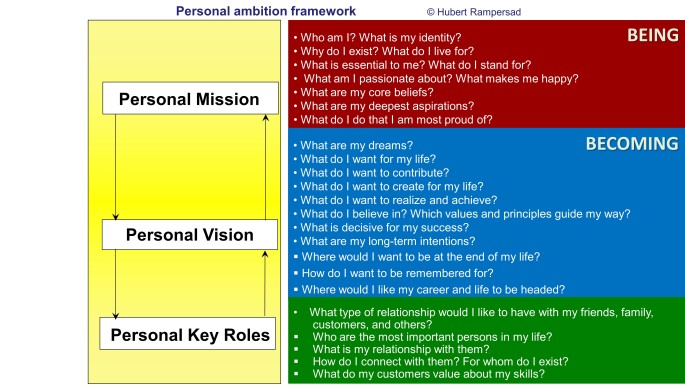
By practicing breathing and silence exercises, you can better connect with your inner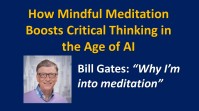 self and find answers to these questions. Read “How Mindful Meditation Boosts Critical Thinking in the Age of AI.”
self and find answers to these questions. Read “How Mindful Meditation Boosts Critical Thinking in the Age of AI.”
Self-knowledge, Self-awareness, Self-management, Self-learning
Through this process, you’ll cultivate self-knowledge, self-awareness, self-management, and self-learning, which entails a journey toward personal disruptive innovation, as shown in this diagram:

The more you want to be innovative, the more you should develop self-knowledge. Self-knowledge is the foundation of your higher purpose. Self-knowledge entails insight into your nature and abilities based on your personal mission, vision, and key roles. Self-awareness is the experience of your personality and the ability to tune in to your feelings, thoughts, and actions. Self-management entails the ability to control your behavior, thoughts, and emotions. Self-learning is the ability to gather, process, retain, and evaluate knowledge alone.
Traditional creativity approaches suck
The best ideas come when you are alone. Self-learning is the foundation of creativity and imagination. Traditional creativity approaches lack imagination because they neglect self-learning and, because of this, fail to address complex problems. They heavily rely on group meetings and, therefore, miss opportunities to develop innovative and imaginative ideas. Nikola Tesla developed many creative ideas while working alone for over thirty years. Similarly, Stephen Hawking made significant discoveries while confined to his wheelchair, and Isaac Newton famously discovered gravity while in social isolation. Remember Nikola Tesla’s statement: “Being alone is when ideas are born. This is the secret of innovation”. Albert Einstein said almost the same: “Albert Einstein said almost the same: “Be a loner. That gives you time to wonder, to search for the truth. Have holy curiosity. Make your life worth living”.
Remember Nikola Tesla’s statement: “Being alone is when ideas are born. This is the secret of innovation”. Albert Einstein said almost the same: “Albert Einstein said almost the same: “Be a loner. That gives you time to wonder, to search for the truth. Have holy curiosity. Make your life worth living”.
Stanford’s traditional design thinking relies heavily on cozy collaborative meetings and what can be described as creativity theater, where the focus does not lead to sustainable creativity development. On the other hand, my eco-design thinking approach takes an inside-out approach to creativity, emphasizing the designer’s imagination and disruption. It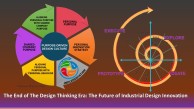 encourages a more independent and innovative growth mindset. Please read my articles “The End of Design Thinking: Cultivating a Purpose-Driven Design Culture to Fix the World” and “10 Ways to Kill Creativity, Sustainability, and Innovation”.
encourages a more independent and innovative growth mindset. Please read my articles “The End of Design Thinking: Cultivating a Purpose-Driven Design Culture to Fix the World” and “10 Ways to Kill Creativity, Sustainability, and Innovation”. 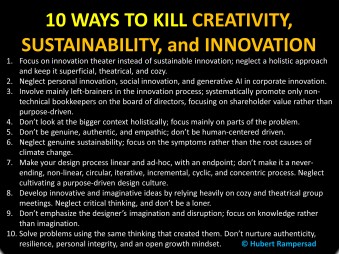
Human consciousness
Spirituality can play a vital role in this creativity process. It provides the intuition needed to make tough decisions and develop a higher level of consciousness. Elon Musk once said, “We should aspire to increase the scope and scale of human consciousness to understand better what questions to ask. The only thing that makes sense It is to strive for greater collective enlightenment.” By focusing inwardly and reflecting on your actions through self-examination with breathing and silence exercises, you can gain insights about yourself and your life’s purpose. This is what Einstein wanted to know.
It is to strive for greater collective enlightenment.” By focusing inwardly and reflecting on your actions through self-examination with breathing and silence exercises, you can gain insights about yourself and your life’s purpose. This is what Einstein wanted to know.
You will also find out why you were born. This process will help you learn more about yourself and discover the truth about your life’s purpose. As Thomas Huxley said, “Learn what is true to do what is right.” This process enables you to learn more and discover the truth about yourself. By formulating your personal ambition, you will initiate self-examination and prepare your mindset for critical thinking. As you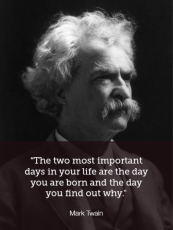 become more conscious of yourself, gain more creativity, and become a critical thinker. The thinking process and mindset changes are meant to prepare you for action as a proactive, empathic, and ethical critical thinker. Based on insights acquired through this process, you will also become more self-assured and work smarter through self-learning and self-knowledge. You become more creative and innovative as you grow more conscious of yourself. The words of Galileo Galilei may also be recalled here—“You cannot teach a man anything; you can only help him discover it in himself.”
become more conscious of yourself, gain more creativity, and become a critical thinker. The thinking process and mindset changes are meant to prepare you for action as a proactive, empathic, and ethical critical thinker. Based on insights acquired through this process, you will also become more self-assured and work smarter through self-learning and self-knowledge. You become more creative and innovative as you grow more conscious of yourself. The words of Galileo Galilei may also be recalled here—“You cannot teach a man anything; you can only help him discover it in himself.”
By practicing breathing and silence exercises, you can better connect with your inner voice and find answers to the questions you seek. This requires tuning into the same wavelength as your spirit, which is closely linked to the concept of synchronicity. Synchronicity refers to meaningful coincidences or events that co-occur without apparent. It is the connection between the ‘inner world’ and the ‘outer world’; consciousness bridges these two dimensions. Synchronicity can manifest in many ways, and it is a phenomenon studied by psychologists such as Carl Gustav Jung and Nikola Tesla, who were also in sync with the universe. I also act like a receiver and tune in at the same frequency.
It is the connection between the ‘inner world’ and the ‘outer world’; consciousness bridges these two dimensions. Synchronicity can manifest in many ways, and it is a phenomenon studied by psychologists such as Carl Gustav Jung and Nikola Tesla, who were also in sync with the universe. I also act like a receiver and tune in at the same frequency.
My article “Sustainable Innovation Fueled by Purpose-Driven Culture” explains the remaining four stages of the personal disruptive innovation model.
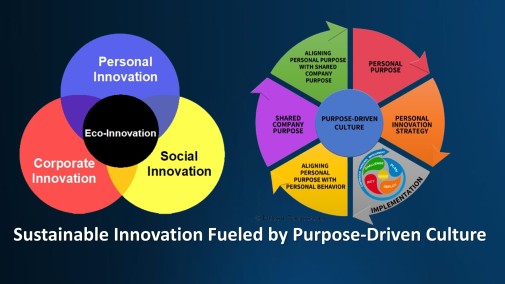
Hubert Rampersad, Ph.D.
To gain more knowledge about this subject, you may consider attending his Orlando-Tampa Live Events:
Building a Purpose-Driven and Design-Driven Culture in Tech Companies

Purpose-Driven and Human-Centered AI
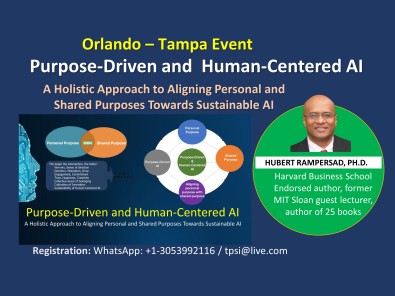
Cultivating Authenticity, Integrity, Empathy, and Critical Thinking in the Age of AI.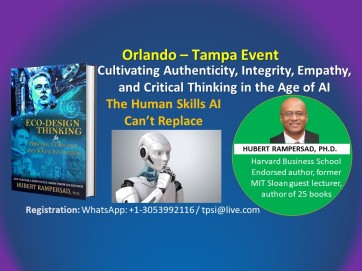
How Sustainability and Generative AI Fuel Design Innovation.
We also offer the Certified Authentic AI Leadership Coaching program. This program is appropriate for AI leaders, managers, and professionals who wish to strengthen their ethical leadership and critical thinking skills, drive their purpose and human-centeredness, and coach others to realize the same.
Hubert Rampersad, Ph.D., founded the Center of Excellence in Design-Driven, Human-Centered, and Purpose-Driven Innovation in Orlando. He is a Dutch-American visionary leader in innovative solutions for genuine sustainability, disruptive design innovation, critical thinking in the age of AI, human-centered and purpose-driven AI, and entrepreneurial leadership. He holds a Ph.D. in Innovation Sciences, an MSc in Technology Engineering & Robotics, and a BSc in Mechanical Engineering from leading accredited universities in the Netherlands (Delft University of Technology, Eindhoven University of Technology). He is a well-known futurist, advocating for genuine sustainability on a global scale. With extensive knowledge and expertise, he has authored 25 books on the topics above in many languages and is highly regarded for his insights in these fields. One of his books, “Total Performance Scorecard,” has been published in 20 languages. Dorothy Leonard, an innovation professor at Harvard Business School, wrote the book’s foreword. Rampersad has also previously served as a guest lecturer at MIT Sloan and was featured in BusinessWeek. He was a senior design innovation coach at ASML, the most crucial tech company in the world and “Europe’s most valuable tech firm. “

Orlando, Florida | tpsi@live.com | Phone/WhatsApp: +13053992116
